Mars المريخ

Mars المريخ
Mars is the fourth planet from the sun. Befitting the red planet's bloody color, the Romans named it after their god of war. The Romans copied the ancient Greeks, who also named the planet after their god of war, Ares. Other civilizations also typically gave the planet names based on its color — for example, the Egyptians named it "Her Desher," meaning "the red one," while ancient Chinese astronomers dubbed it "the fire star."
Mars is the fourth planet from the Sun and the second-smallest planet in the Solar System after Mercury. In English, Mars carries a name of the Roman god of war, and is often referred to as the "Red Planet" because the reddish iron oxide prevalent on its surface gives it a reddish appearance that is distinctive among the astronomical bodies visible to the naked eye. Mars is a terrestrial planet with a thin atmosphere, having surface features reminiscent both of the impact craters of the Moon and the valleys, deserts, and polar ice caps of Earth.
The rotational period and seasonal cycles of Mars are likewise similar to those of Earth, as is the tilt that produces the seasons. Mars is the site of Olympus Mons, the largest volcano and second-highest known mountain in the Solar System, and of Valles Marineris, one of the largest canyons in the Solar System. The smooth Borealis basin in the northern hemisphere covers 40% of the planet and may be a giant impact feature. Mars has two moons, Phobos and Deimos, which are small and irregularly shaped. These may be captured asteroids, similar to 5261 Eureka, a Mars trojan.
There are ongoing investigations assessing the past habitability potential of Mars, as well as the possibility of extant life. Future astrobiology missions are planned, including the Mars 2020 and ExoMars rovers. Liquid water cannot exist on the surface of Mars due to low atmospheric pressure, which is less than 1% of the Earth's, except at the lowest elevations for short periods. The two polar ice caps appear to be made largely of water. The volume of water ice in the south polar ice cap, if melted, would be sufficient to cover the entire planetary surface to a depth of 11 meters (36 ft). In November 2016, NASA reported finding a large amount of underground ice in the Utopia Planitiaregion of Mars. The volume of water detected has been estimated to be equivalent to the volume of water in Lake Superior.
Mars can easily be seen from Earth with the naked eye, as can its reddish coloring. Its apparent magnitude reaches −2.94, which is surpassed only by Jupiter, Venus, the Moon, and the Sun. Optical ground-based telescopes are typically limited to resolving features about 300 kilometers (190 mi) across when Earth and Mars are closest because of Earth's atmosphere.
Physical characteristics
Mars is approximately half the diameter of Earth with a surface area only slightly less than the total area of Earth's dry land. Mars is less dense than Earth, having about 15% of Earth's volume and 11% of Earth's mass, resulting in about 38% of Earth's surface gravity. The red-orange appearance of the Martian surface is caused by iron(III) oxide, or rust. It can look like butterscotch; other common surface colors include golden, brown, tan, and greenish, depending on the minerals present.
Internal structure
Like Earth, Mars has differentiated into a dense metallic core overlaid by less dense materials. Current models of its interior imply a core with a radius of about 1,794 ± 65 kilometers (1,115 ± 40 mi), consisting primarily of iron and nickelwith about 16–17% sulfur. This iron(II) sulfide core is thought to be twice as rich in lighter elements as Earth's. The core is surrounded by a silicate mantle that formed many of the tectonic and volcanic features on the planet, but it appears to be dormant. Besides silicon and oxygen, the most abundant elements in the Martian crust are iron, magnesium, aluminum, calcium, and potassium. The average thickness of the planet's crust is about 50 km (31 mi), with a maximum thickness of 125 km (78 mi). Earth's crust averages 40 km (25 mi).
Surface geology
Mars is a terrestrial planet that consists of minerals containing silicon and oxygen, metals, and other elements that typically make up rock. The surface of Mars is primarily composed of tholeiitic basalt,[41] although parts are more silica-rich than typical basalt and may be similar to andesitic rocks on Earth or silica glass. Regions of low albedo suggest concentrations of plagioclase feldspar, with northern low albedo regions displaying higher than normal concentrations of sheet silicates and high-silicon glass. Parts of the southern highlands include detectable amounts of high-calcium pyroxenes. Localized concentrations of hematite and olivine have been found. Much of the surface is deeply covered by finely grained iron(III) oxide dust.
Although Mars has no evidence of a structured global magnetic field, observations show that parts of the planet's crust have been magnetized, suggesting that alternating polarity reversals of its dipole field have occurred in the past. This paleomagnetism of magnetically susceptible minerals is similar to the alternating bands found on Earth's ocean floors. One theory, published in 1999 and re-examined in October 2005 (with the help of the Mars Global Surveyor), is that these bands suggest plate tectonic activity on Mars four billion years ago, before the planetary dynamo ceased to function and the planet's magnetic field faded.
It is thought that, during the Solar System's formation, Mars was created as the result of a stochastic process of run-away accretion of material from the protoplanetary disk that orbited the Sun. Mars has many distinctive chemical features caused by its position in the Solar System. Elements with comparatively low boiling points, such as chlorine, phosphorus, and sulphur, are much more common on Mars than Earth; these elements were probably pushed outward by the young Sun's energetic solar wind.
After the formation of the planets, all were subjected to the so-called "Late Heavy Bombardment". About 60% of the surface of Mars shows a record of impacts from that era, whereas much of the remaining surface is probably underlain by immense impact basins caused by those events. There is evidence of an enormous impact basin in the northern hemisphere of Mars, spanning 10,600 by 8,500 km (6,600 by 5,300 mi), or roughly four times the size of the Moon's South Pole – Aitken basin, the largest impact basin yet discovered. This theory suggests that Mars was struck by a Pluto-sized body about four billion years ago. The event, thought to be the cause of the Martian hemispheric dichotomy, created the smooth Borealis basin that covers 40% of the planet.
The geological history of Mars can be split into many periods, but the following are the three primary periods:
- Noachian period (named after Noachis Terra): Formation of the oldest extant surfaces of Mars, 4.5 to 3.5 billion years ago. Noachian age surfaces are scarred by many large impact craters. The Tharsis bulge, a volcanic upland, is thought to have formed during this period, with extensive flooding by liquid water late in the period.
- Hesperian period (named after Hesperia Planum): 3.5 to between 3.3 and 2.9 billion years ago. The Hesperian period is marked by the formation of extensive lava plains.
- Amazonian period (named after Amazonis Planitia): between 3.3 and 2.9 billion years ago to the present. Amazonian regions have few meteorite impact craters, but are otherwise quite varied. Olympus Mons formed during this period, with lava flows elsewhere on Mars.
Geological activity is still taking place on Mars. The Athabasca Valles is home to sheet-like lava flows created about 200 Mya. Water flows in the grabens called the Cerberus Fossae occurred less than 20 Mya, indicating equally recent volcanic intrusions. On February 19, 2008, images from the Mars Reconnaissance Orbitershowed evidence of an avalanche from a 700-metre-high (2,300 ft) cliff.
Soil
The Phoenix lander returned data showing Martian soil to be slightly alkaline and containing elements such as magnesium, sodium, potassium and chlorine. These nutrients are found in soils on Earth, and they are necessary for growth of plants. Experiments performed by the lander showed that the Martian soil has a basic pH of 7.7, and contains 0.6% of the saltperchlorate. This is a very high concentration and makes the Martian soil toxic (see also Martian soil toxicity).
Streaks are common across Mars and new ones appear frequently on steep slopes of craters, troughs, and valleys. The streaks are dark at first and get lighter with age. The streaks can start in a tiny area, then spread out for hundreds of metres. They have been seen to follow the edges of boulders and other obstacles in their path. The commonly accepted theories include that they are dark underlying layers of soil revealed after avalanches of bright dust or dust devils. Several other explanations have been put forward, including those that involve water or even the growth of organisms.
Hydrology
Liquid water cannot exist on the surface of Mars due to low atmospheric pressure, which is less than 1% that of Earth's, ]except at the lowest elevations for short periods. The two polar ice caps appear to be made largely of water.The volume of water ice in the south polar ice cap, if melted, would be sufficient to cover the entire planetary surface to a depth of 11 meters (36 ft). A permafrost mantle stretches from the pole to latitudes of about 60°. Large quantities of water ice are thought to be trapped within the thick cryosphere of Mars. Radar data from Mars Express and the Mars Reconnaissance Orbiter show large quantities of water ice at both poles (July 2005) and at middle latitudes (November 2008). The Phoenix lander directly sampled water ice in shallow Martian soil on July 31, 2008.
Landforms visible on Mars strongly suggest that liquid water has existed on the planet's surface. Huge linear swathes of scoured ground, known as outflow channels, cut across the surface in about 25 places. These are thought to be a record of erosion caused by the catastrophic release of water from subsurface aquifers, though some of these structures have been hypothesized to result from the action of glaciers or lava. One of the larger examples, Ma'adim Vallis is 700 km (430 mi) long, much greater than the Grand Canyon, with a width of 20 km (12 mi) and a depth of 2 km (1.2 mi) in places. It is thought to have been carved by flowing water early in Mars's history. The youngest of these channels are thought to have formed as recently as only a few million years ago. Elsewhere, particularly on the oldest areas of the Martian surface, finer-scale, dendritic networks of valleys are spread across significant proportions of the landscape. Features of these valleys and their distribution strongly imply that they were carved by runoff resulting from precipitation in early Mars history. Subsurface water flow and groundwater sapping may play important subsidiary roles in some networks, but precipitation was probably the root cause of the incision in almost all cases.
Along crater and canyon walls, there are thousands of features that appear similar to terrestrial gullies. The gullies tend to be in the highlands of the southern hemisphere and to face the Equator; all are poleward of 30° latitude. A number of authors have suggested that their formation process involves liquid water, probably from melting ice, although others have argued for formation mechanisms involving carbon dioxide frost or the movement of dry dust. No partially degraded gullies have formed by weathering and no superimposed impact craters have been observed, indicating that these are young features, possibly still active. Other geological features, such as deltas and alluvial fans preserved in craters, are further evidence for warmer, wetter conditions at an interval or intervals in earlier Mars history. Such conditions necessarily require the widespread presence of crater lakes across a large proportion of the surface, for which there is independent mineralogical, sedimentological and geomorphological evidence.
Further evidence that liquid water once existed on the surface of Mars comes from the detection of specific minerals such as hematite and goethite, both of which sometimes form in the presence of water. In 2004, Opportunity detected the mineral jarosite. This forms only in the presence of acidic water, which demonstrates that water once existed on Mars. More recent evidence for liquid water comes from the finding of the mineral gypsum on the surface by NASA's Mars rover Opportunity in December 2011. It is estimated that the amount of water in the upper mantle of Mars, represented by hydroxyl ionscontained within the minerals of Mars's geology, is equal to or greater than that of Earth at 50–300 parts per million of water, which is enough to cover the entire planet to a depth of 200–1,000 m (660–3,280 ft).
In 2005, radar data revealed the presence of large quantities of water ice at the poles and at mid-latitudes. The Mars rover Spirit sampled chemical compounds containing water molecules in March 2007. The Phoenix lander directly sampled water ice in shallow Martian soil on July 31, 2008.
On March 18, 2013, NASA reported evidence from instruments on the Curiosity rover of mineral hydration, likely hydrated calcium sulfate, in several rock samples including the broken fragments of "Tintina" rock and "Sutton Inlier" rock as well as in veins and nodules in other rocks like "Knorr" rock and "Wernicke" rock. Analysis using the rover's DAN instrumentprovided evidence of subsurface water, amounting to as much as 4% water content, down to a depth of 60 cm (24 in), during the rover's traverse from the Bradbury Landing site to the Yellowknife Bay area in the Glenelg terrain. In September 2015, NASA announced that they had found conclusive evidence of hydrated brine flows on recurring slope lineae, based on spectrometer readings of the darkened areas of slopes. These observations provided confirmation of earlier hypotheses based on timing of formation and their rate of growth, that these dark streaks resulted from water flowing in the very shallow subsurface. The streaks contain hydrated salts, perchlorates, which have water molecules in their crystal structure. The streaks flow downhill in Martian summer, when the temperature is above −23 degrees Celsius, and freeze at lower temperatures. On September 28, 2015, NASA announced the presence of briny flowing salt water on the Martian surface.
Researchers suspect that much of the low northern plains of the planet were covered with an ocean hundreds of meters deep, though this remains controversial. In March 2015, scientists stated that such an ocean might have been the size of Earth's Arctic Ocean. This finding was derived from the ratio of water to deuterium in the modern Martian atmosphere compared to that ratio on Earth. The amount of Martian deuterium is eight times the amount that exists on Earth, suggesting that ancient Mars had significantly higher levels of water. Results from the Curiosity rover had previously found a high ratio of deuterium in Gale Crater, though not significantly high enough to suggest the former presence of an ocean. Other scientists caution that these results have not been confirmed, and point out that Martian climate models have not yet shown that the planet was warm enough in the past to support bodies of liquid water.
Near the northern polar cap is the 81.4 kilometres (50.6 mi) wide Korolev Crater, where the Mars Express orbiter found it to be filled with approximately 2,200 cubic kilometres (530 cu mi) of water ice. The crater floor lies about 2 kilometres (1.2 mi) below the rim, and is covered by a 1.8 kilometres (1.1 mi) deep central mound of permanent water ice, up to 60 kilometres (37 mi) in diameter.
Polar caps
Mars has two permanent polar ice caps. During a pole's winter, it lies in continuous darkness, chilling the surface and causing the deposition of 25–30% of the atmosphere into slabs of CO2 ice (dry ice). When the poles are again exposed to sunlight, the frozen CO2 sublimes. These seasonal actions transport large amounts of dust and water vapor, giving rise to Earth-like frost and large cirrus clouds. Clouds of water-ice were photographed by the Opportunity rover in 2004.
The caps at both poles consist primarily (70%) of water ice. Frozen carbon dioxide accumulates as a comparatively thin layer about one metre thick on the north cap in the northern winter only, whereas the south cap has a permanent dry ice cover about eight metres thick. This permanent dry ice cover at the south pole is peppered by flat floored, shallow, roughly circular pits, which repeat imaging shows are expanding by meters per year; this suggests that the permanent CO2 cover over the south pole water ice is degrading over time. The northern polar cap has a diameter of about 1,000 km (620 mi) during the northern Mars summer, and contains about 1.6 million cubic kilometres (380,000 cu mi) of ice, which, if spread evenly on the cap, would be 2 km (1.2 mi) thick. (This compares to a volume of 2.85 million cubic kilometres (680,000 cu mi) for the Greenland ice sheet.) The southern polar cap has a diameter of 350 km (220 mi) and a thickness of 3 km (1.9 mi). The total volume of ice in the south polar cap plus the adjacent layered deposits has been estimated at 1.6 million cubic km.[112] Both polar caps show spiral troughs, which recent analysis of SHARAD ice penetrating radar has shown are a result of katabatic winds that spiral due to the Coriolis Effect.
The seasonal frosting of areas near the southern ice cap results in the formation of transparent 1-metre-thick slabs of dry ice above the ground. With the arrival of spring, sunlight warms the subsurface and pressure from subliming CO2 builds up under a slab, elevating and ultimately rupturing it. This leads to geyser-like eruptionsof CO2 gas mixed with dark basaltic sand or dust. This process is rapid, observed happening in the space of a few days, weeks or months, a rate of change rather unusual in geology – especially for Mars. The gas rushing underneath a slab to the site of a geyser carves a spiderweb-like pattern of radial channels under the ice, the process being the inverted equivalent of an erosion network formed by water draining through a single plughole.
Geography and naming of surface features
Although better remembered for mapping the Moon, Johann Heinrich Mädler and Wilhelm Beer were the first "areographers". They began by establishing that most of Mars's surface features were permanent and by more precisely determining the planet's rotation period. In 1840, Mädler combined ten years of observations and drew the first map of Mars. Rather than giving names to the various markings, Beer and Mädler simply designated them with letters; Meridian Bay (Sinus Meridiani) was thus feature "a".
Today, features on Mars are named from a variety of sources. Albedo features are named for classical mythology. Craters larger than 60 km are named for deceased scientists and writers and others who have contributed to the study of Mars. Craters smaller than 60 km are named for towns and villages of the world with populations of less than 100,000. Large valleys are named for the word "Mars" or "star" in various languages; small valleys are named for rivers.
Large albedo features retain many of the older names, but are often updated to reflect new knowledge of the nature of the features. For example, Nix Olympica (the snows of Olympus) has become Olympus Mons (Mount Olympus). The surface of Mars as seen from Earth is divided into two kinds of areas, with differing albedo. The paler plains covered with dust and sand rich in reddish iron oxides were once thought of as Martian "continents" and given names like Arabia Terra (land of Arabia) or Amazonis Planitia (Amazonian plain). The dark features were thought to be seas, hence their names Mare Erythraeum, Mare Sirenum and Aurorae Sinus. The largest dark feature seen from Earth is Syrtis Major Planum. The permanent northern polar ice cap is named Planum Boreum, whereas the southern cap is called Planum Australe.
Mars's equator is defined by its rotation, but the location of its Prime Meridian was specified, as was Earth's (at Greenwich), by choice of an arbitrary point; Mädler and Beer selected a line for their first maps of Mars in 1830. After the spacecraft Mariner 9provided extensive imagery of Mars in 1972, a small crater (later called Airy-0), located in the Sinus Meridiani ("Middle Bay" or "Meridian Bay"), was chosen for the definition of 0.0° longitude to coincide with the original selection.
Because Mars has no oceans and hence no "sea level", a zero-elevation surface had to be selected as a reference level; this is called the areoid of Mars, analogous to the terrestrial geoid. Zero altitude was defined by the height at which there is 610.5 Pa (6.105 mbar) of atmospheric pressure. This pressure corresponds to the triple point of water, and it is about 0.6% of the sea level surface pressure on Earth (0.006 atm). In practice, today this surface is defined directly from satellite gravity measurements.
Map of quadrangles
For mapping purposes, the United States Geological Survey divides the surface of Mars into thirty "quadrangles", each named for a prominent physiographic feature within that quadrangle.The quadrangles can be seen and explored via the interactive image map below.
Mars is scarred by a number of impact craters: a total of 43,000 craters with a diameter of 5 km (3.1 mi) or greater have been found. The largest confirmed of these is the Hellas impact basin, a light albedo feature clearly visible from Earth. Due to the smaller mass of Mars, the probability of an object colliding with the planet is about half that of Earth. Mars is located closer to the asteroid belt, so it has an increased chance of being struck by materials from that source. Mars is more likely to be struck by short-period comets, i.e., those that lie within the orbit of Jupiter. In spite of this, there are far fewer craters on Mars compared with the Moon, because the atmosphere of Mars provides protection against small meteors and surface modifying processes have erased some craters.
Martian craters can have a morphology that suggests the ground became wet after the meteor impacted.
Volcanoes
The shield volcano Olympus Mons (Mount Olympus) is an extinct volcano in the vast upland region Tharsis, which contains several other large volcanoes. Olympus Mons is roughly three times the height of Mount Everest, which in comparison stands at just over 8.8 km (5.5 mi). It is either the tallest or second-tallest mountain in the Solar System, depending on how it is measured, with various sources giving figures ranging from about 21 to 27 km (13 to 17 mi) high.
Tectonic sites
The large canyon, Valles Marineris (Latin for "Mariner Valleys", also known as Agathadaemon in the old canal maps), has a length of 4,000 km (2,500 mi) and a depth of up to 7 km (4.3 mi). The length of Valles Marineris is equivalent to the length of Europe and extends across one-fifth the circumference of Mars. By comparison, the Grand Canyon on Earth is only 446 km (277 mi) long and nearly 2 km (1.2 mi) deep. Valles Marineris was formed due to the swelling of the Tharsis area, which caused the crust in the area of Valles Marineris to collapse. In 2012, it was proposed that Valles Marineris is not just a graben, but a plate boundary where 150 km (93 mi) of transverse motion has occurred, making Mars a planet with possibly a two-tectonic plate arrangement.
Holes
Images from the Thermal Emission Imaging System (THEMIS) aboard NASA's Mars Odyssey orbiter have revealed seven possible cave entrances on the flanks of the volcano Arsia Mons. The caves, named after loved ones of their discoverers, are collectively known as the "seven sisters". Cave entrances measure from 100 to 252 m (328 to 827 ft) wide and they are estimated to be at least 73 to 96 m (240 to 315 ft) deep. Because light does not reach the floor of most of the caves, it is possible that they extend much deeper than these lower estimates and widen below the surface. "Dena" is the only exception; its floor is visible and was measured to be 130 m (430 ft) deep. The interiors of these caverns may be protected from micrometeoroids, UV radiation, solar flares and high energy particles that bombard the planet's surface.
Atmosphere
Mars lost its magnetosphere 4 billion years ago, possibly because of numerous asteroid strikes, so the solar wind interacts directly with the Martian ionosphere, lowering the atmospheric density by stripping away atoms from the outer layer. Both Mars Global Surveyor and Mars Express have detected ionised atmospheric particles trailing off into space behind Mars, and this atmospheric loss is being studied by the MAVEN orbiter. Compared to Earth, the atmosphere of Mars is quite rarefied. Atmospheric pressure on the surface today ranges from a low of 30 Pa (0.030 kPa) on Olympus Mons to over 1,155 Pa (1.155 kPa) in Hellas Planitia, with a mean pressure at the surface level of 600 Pa (0.60 kPa). The highest atmospheric density on Mars is equal to that found 35 km (22 mi) above Earth's surface. The resulting mean surface pressure is only 0.6% of that of Earth (101.3 kPa). The scale height of the atmosphere is about 10.8 km (6.7 mi), which is higher than Earth's, 6 km (3.7 mi), because the surface gravity of Mars is only about 38% of Earth's, an effect offset by both the lower temperature and 50% higher average molecular weight of the atmosphere of Mars.
The atmosphere of Mars consists of about 96% carbon dioxide, 1.93% argon and 1.89% nitrogen along with traces of oxygen and water. The atmosphere is quite dusty, containing particulates about 1.5 µm in diameter which give the Martian sky a tawny color when seen from the surface. It may take on a pink hue due to iron oxide particles suspended in it.
Methane has been detected in the Martian atmosphere; it occurs in extended plumes, and the profiles imply that the methane is released from discrete regions. The concentration of methane fluctuates from about 0.24 ppb during the northern winter to about 0.65 ppb during the summer. In northern midsummer 2003, the principal plume contained 19,000 metric tons of methane, with an estimated source strength of 0.6 kilograms per second. The profiles suggest that there may be two local source regions, the first centered near 30°N 260°W and the second near 0°N 310°W.It is estimated that Mars must produce 270 tonnes per year of methane.
Methane can exist in the Martian atmosphere for only a limited period before it is destroyed—estimates of its lifetime range from 0.6–4 years. Its presence despite this short lifetime indicates that an active source of the gas must be present. Volcanic activity, cometary impacts, and the presence of methanogenic microbial life forms are among possible sources. Methane could be produced by a non-biological process called serpentinization involving water, carbon dioxide, and the mineral olivine, which is known to be common on Mars.
The Curiosity rover, which landed on Mars in August 2012, is able to make measurements that distinguish between different isotopologues of methane, but even if the mission is to determine that microscopic Martian life is the source of the methane, the life forms likely reside far below the surface, outside of the rover's reach.The first measurements with the Tunable Laser Spectrometer (TLS) indicated that there is less than 5 ppb of methane at the landing site at the point of the measurement. On September 19, 2013, NASA scientists, from further measurements by Curiosity, reported no detection of atmospheric methane with a measured value of 0.18±0.67 ppbv corresponding to an upper limit of only 1.3 ppbv (95% confidence limit) and, as a result, conclude that the probability of current methanogenic microbial activity on Mars is reduced.
The Mars Orbiter Mission by India is searching for methane in the atmosphere, while the ExoMars Trace Gas Orbiter, launched in 2016, would further study the methane as well as its decomposition products, such as formaldehyde and methanol.
On December 16, 2014, NASA reported the Curiosity rover detected a "tenfold spike", likely localized, in the amount of methane in the Martian atmosphere. Sample measurements taken "a dozen times over 20 months" showed increases in late 2013 and early 2014, averaging "7 parts of methane per billion in the atmosphere." Before and after that, readings averaged around one-tenth that level.
Ammonia was tentatively detected on Mars by the Mars Express satellite, but with its relatively short lifetime, it is not clear what produced it. Ammonia is not stable in the Martian atmosphere and breaks down after a few hours. One possible source is volcanic activity.
In September 2017, NASA reported radiation levels on the surface of the planet Mars were temporarily doubled, and were associated with an aurora 25 times brighter than any observed earlier, due to a massive, and unexpected, solar storm in the middle of the month.
Aurora
In 1994, the European Space Agency's Mars Express found an ultraviolet glow coming from "magnetic umbrellas" in the southern hemisphere. Mars does not have a global magnetic field which guides charged particles entering the atmosphere. Mars has multiple umbrella-shaped magnetic fields mainly in the southern hemisphere, which are remnants of a global field that decayed billions of years ago.
In late December 2014, NASA's MAVEN spacecraft detected evidence of widespread auroras in Mars's northern hemisphere and descended to approximately 20–30 degrees North latitude of Mars's equator. The particles causing the aurora penetrated into the Martian atmosphere, creating auroras below 100 km above the surface, Earth's auroras range from 100 km to 500 km above the surface. Magnetic fields in the solar wind drape over Mars, into the atmosphere, and the charged particles follow the solar wind magnetic field lines into the atmosphere, causing auroras to occur outside the magnetic umbrellas.
On March 18, 2015, NASA reported the detection of an aurora that is not fully understood and an unexplained dust cloud in the atmosphere of Mars.
Climate
Of all the planets in the Solar System, the seasons of Mars are the most Earth-like, due to the similar tilts of the two planets' rotational axes. The lengths of the Martian seasons are about twice those of Earth's because Mars's greater distance from the Sun leads to the Martian year being about two Earth years long. Martian surface temperatures vary from lows of about −143 °C (−225 °F) at the winter polar caps to highs of up to 35 °C (95 °F) in equatorial summer. The wide range in temperatures is due to the thin atmosphere which cannot store much solar heat, the low atmospheric pressure, and the low thermal inertia of Martian soil. The planet is 1.52 times as far from the Sun as Earth, resulting in just 43% of the amount of sunlight.
If Mars had an Earth-like orbit, its seasons would be similar to Earth's because its axial tilt is similar to Earth's. The comparatively large eccentricity of the Martian orbit has a significant effect. Mars is near perihelion when it is summer in the southern hemisphere and winter in the north, and near aphelion when it is winter in the southern hemisphere and summer in the north. As a result, the seasons in the southern hemisphere are more extreme and the seasons in the northern are milder than would otherwise be the case. The summer temperatures in the south can be warmer than the equivalent summer temperatures in the north by up to 30 °C (54 °F).
 Mars has the largest dust storms in the Solar System, reaching speeds of over 160 km/h (100 mph). These can vary from a storm over a small area, to gigantic storms that cover the entire planet. They tend to occur when Mars is closest to the Sun, and have been shown to increase the global temperature.
Mars has the largest dust storms in the Solar System, reaching speeds of over 160 km/h (100 mph). These can vary from a storm over a small area, to gigantic storms that cover the entire planet. They tend to occur when Mars is closest to the Sun, and have been shown to increase the global temperature.Orbit and rotation
Mars's average distance from the Sun is roughly 230 million km (143 million mi), and its orbital period is 687 (Earth) days. The solar day (or sol) on Mars is only slightly longer than an Earth day: 24 hours, 39 minutes, and 35.244 seconds. A Martian year is equal to 1.8809 Earth years, or 1 year, 320 days, and 18.2 hours.
The axial tilt of Mars is 25.19 degrees relative to its orbital plane, which is similar to the axial tilt of Earth. As a result, Mars has seasons like Earth, though on Mars they are nearly twice as long because its orbital period is that much longer. In the present day epoch, the orientation of the north pole of Mars is close to the star Deneb.
Mars has a relatively pronounced orbital eccentricity of about 0.09; of the seven other planets in the Solar System, only Mercury has a larger orbital eccentricity. It is known that in the past, Mars has had a much more circular orbit. At one point, 1.35 million Earth years ago, Mars had an eccentricity of roughly 0.002, much less than that of Earth today. Mars's cycle of eccentricity is 96,000 Earth years compared to Earth's cycle of 100,000 years. Mars has a much longer cycle of eccentricity, with a period of 2.2 million Earth years, and this overshadows the 96,000-year cycle in the eccentricity graphs. For the last 35,000 years, the orbit of Mars has been getting slightly more eccentric because of the gravitational effects of the other planets. The closest distance between Earth and Mars will continue to mildly decrease for the next 25,000 years.
Habitability and search for life
The current understanding of planetary habitability—the ability of a world to develop environmental conditions favorable to the emergence of life—favors planets that have liquid water on their surface. Most often this requires the orbit of a planet to lie within the habitable zone, which for the Sun extends from just beyond Venus to about the semi-major axis of Mars. During perihelion, Mars dips inside this region, but Mars's thin (low-pressure) atmosphere prevents liquid water from existing over large regions for extended periods. The past flow of liquid water demonstrates the planet's potential for habitability. Recent evidence has suggested that any water on the Martian surface may have been too salty and acidic to support regular terrestrial life.
The lack of a magnetosphere and the extremely thin atmosphere of Mars are a challenge: the planet has little heat transfer across its surface, poor insulation against bombardment of the solar wind and insufficient atmospheric pressure to retain water in a liquid form (water instead sublimes to a gaseous state). Mars is nearly, or perhaps totally, geologically dead; the end of volcanic activity has apparently stopped the recycling of chemicals and minerals between the surface and interior of the planet.
In situ investigations have been performed on Mars by the Viking landers, Spirit and Opportunity rovers, Phoenix lander, and Curiosity rover. Evidence suggests that the planet was once significantly more habitable than it is today, but whether living organisms ever existed there remains unknown. The Viking probes of the mid-1970s carried experiments designed to detect microorganisms in Martian soil at their respective landing sites and had positive results, including a temporary increase of CO
2 production on exposure to water and nutrients. This sign of life was later disputed by scientists, resulting in a continuing debate, with NASA scientist Gilbert Levin asserting that Viking may have found life. A re-analysis of the Viking data, in light of modern knowledge of extremophile forms of life, has suggested that the Viking tests were not sophisticated enough to detect these forms of life. The tests could even have killed a (hypothetical) life form. Tests conducted by the Phoenix Mars lander have shown that the soil has a alkaline pH and it contains magnesium, sodium, potassium and chloride. The soil nutrients may be able to support life, but life would still have to be shielded from the intense ultraviolet light. A recent analysis of martian meteorite EETA79001 found 0.6 ppm ClO−
4, 1.4 ppm ClO−
3, and 16 ppm NO−
3, most likely of Martian origin. The ClO−
3 suggests the presence of other highly oxidizing oxychlorines, such as ClO−
2 or ClO, produced both by UV oxidation of Cl and X-ray radiolysis of ClO−
4. Thus, only highly refractory and/or well-protected (sub-surface) organics or life forms are likely to survive.
2 production on exposure to water and nutrients. This sign of life was later disputed by scientists, resulting in a continuing debate, with NASA scientist Gilbert Levin asserting that Viking may have found life. A re-analysis of the Viking data, in light of modern knowledge of extremophile forms of life, has suggested that the Viking tests were not sophisticated enough to detect these forms of life. The tests could even have killed a (hypothetical) life form. Tests conducted by the Phoenix Mars lander have shown that the soil has a alkaline pH and it contains magnesium, sodium, potassium and chloride. The soil nutrients may be able to support life, but life would still have to be shielded from the intense ultraviolet light. A recent analysis of martian meteorite EETA79001 found 0.6 ppm ClO−
4, 1.4 ppm ClO−
3, and 16 ppm NO−
3, most likely of Martian origin. The ClO−
3 suggests the presence of other highly oxidizing oxychlorines, such as ClO−
2 or ClO, produced both by UV oxidation of Cl and X-ray radiolysis of ClO−
4. Thus, only highly refractory and/or well-protected (sub-surface) organics or life forms are likely to survive.
A 2014 analysis of the Phoenix WCL showed that the Ca(ClO
4)
2 in the Phoenix soil has not interacted with liquid water of any form, perhaps for as long as 600 Myr. If it had, the highly soluble Ca(ClO
4)
2 in contact with liquid water would have formed only CaSO
4. This suggests a severely arid environment, with minimal or no liquid water interaction.
4)
2 in the Phoenix soil has not interacted with liquid water of any form, perhaps for as long as 600 Myr. If it had, the highly soluble Ca(ClO
4)
2 in contact with liquid water would have formed only CaSO
4. This suggests a severely arid environment, with minimal or no liquid water interaction.
Scientists have proposed that carbonate globules found in meteorite ALH84001, which is thought to have originated from Mars, could be fossilized microbes extant on Mars when the meteorite was blasted from the Martian surface by a meteor strike some 15 million years ago. This proposal has been met with skepticism, and an exclusively inorganic origin for the shapes has been proposed.
Small quantities of methane and formaldehyde detected by Mars orbiters are both claimed to be possible evidence for life, as these chemical compounds would quickly break down in the Martian atmosphere. Alternatively, these compounds may instead be replenished by volcanic or other geological means, such as serpentinization.
Impact glass, formed by the impact of meteors, which on Earth can preserve signs of life, has been found on the surface of the impact craters on Mars. Likewise, the glass in impact craters on Mars could have preserved signs of life if life existed at the site.
In May 2017, evidence of the earliest known life on land on Earth may have been found in 3.48-billion-year-old geyserite and other related mineral deposits (often found around hot springs and geysers) uncovered in the Pilbara Craton of Western Australia. These findings may be helpful in deciding where best to search for early signs of life on the planet Mars.
In early 2018, media reports speculated that certain rock features at a site called Jura looked like a type of fossil, but project scientists say the formations likely resulted from a geological process at the bottom of an ancient drying lakebed, and are related to mineral veins in the area similar to gypsum crystals.
On June 7, 2018, NASA announced that the Curiosity rover had discovered organic compounds in sedimentary rocks dating to three billion years old, indicating that some of the building blocks for life were present.
In July 2018, scientists reported the discovery of a subglacial lake on Mars, the first known stable body of water on the planet. It sits 1.5 km (0.9 mi) below the surface at the base of the southern polar ice cap and is about 20 km (12 mi) wide. The lake was discovered using the MARSIS radar on board the Mars Express orbiter, and the profiles were collected between May 2012 and December 2015. The lake is centered at 193°E, 81°S, a flat area that does not exhibit any peculiar topographic characteristics. It is mostly surrounded by higher ground except on its eastern side, where there is a depression.
Moons
Mars has two relatively small (compared to Earth's) natural moons, Phobos (about 22 km (14 mi) in diameter) and Deimos (about 12 km (7.5 mi) in diameter), which orbit close to the planet. Asteroid capture is a long-favored theory, but their origin remains uncertain. Both satellites were discovered in 1877 by Asaph Hall; they are named after the characters Phobos (panic/fear) and Deimos (terror/dread), who, in Greek mythology, accompanied their father Ares, god of war, into battle. Mars was the Roman counterpart of Ares. In modern Greek, the planet retains its ancient name Ares (Aris: Άρης).
From the surface of Mars, the motions of Phobos and Deimos appear different from that of the Moon. Phobos rises in the west, sets in the east, and rises again in just 11 hours. Deimos, being only just outside synchronous orbit – where the orbital period would match the planet's period of rotation – rises as expected in the east but slowly. Despite the 30-hour orbit of Deimos, 2.7 days elapse between its rise and set for an equatorial observer, as it slowly falls behind the rotation of Mars.
Because the orbit of Phobos is below synchronous altitude, the tidal forcesfrom the planet Mars are gradually lowering its orbit. In about 50 million years, it could either crash into Mars's surface or break up into a ring structure around the planet.
The origin of the two moons is not well understood. Their low albedo and carbonaceous chondrite composition have been regarded as similar to asteroids, supporting the capture theory. The unstable orbit of Phobos would seem to point towards a relatively recent capture. But both have circular orbits, near the equator, which is unusual for captured objects and the required capture dynamics are complex. Accretion early in the history of Mars is plausible, but would not account for a composition resembling asteroids rather than Mars itself, if that is confirmed.
A third possibility is the involvement of a third body or a type of impact disruption. More-recent lines of evidence for Phobos having a highly porous interior, and suggesting a composition containing mainly phyllosilicates and other minerals known from Mars, point toward an origin of Phobos from material ejected by an impact on Mars that reaccreted in Martian orbit, similar to the prevailing theory for the origin of Earth's moon. Although the VNIR spectra of the moons of Mars resemble those of outer-belt asteroids, the thermal infrared spectra of Phobos are reported to be inconsistent with chondrites of any class.
Mars may have moons smaller than 50 to 100 metres (160 to 330 ft) in diameter, and a dust ring is predicted to exist between Phobos and Deimos.
Exploration
Dozens of crewless spacecraft, including orbiters, landers, and rovers, have been sent to Mars by the Soviet Union, the United States, Europe, and India to study the planet's surface, climate, and geology.
As of 2018, Mars is host to eight functioning spacecraft: six in orbit—2001 Mars Odyssey, Mars Express, Mars Reconnaissance Orbiter, MAVEN, Mars Orbiter Mission and ExoMars Trace Gas Orbiter—and two on the surface—Mars Science Laboratory Curiosity (rover) and InSight (lander). Another rover, Opportunity, is inactive now, but NASA still hopes to reestablish contact with it. The public can request images of Mars via the Mars Reconnaissance Orbiter's HiWish program.
The Mars Science Laboratory, named Curiosity, launched on November 26, 2011, and reached Mars on August 6, 2012 UTC. It is larger and more advanced than the Mars Exploration Rovers, with a movement rate up to 90 m (300 ft) per hour. Experiments include a laser chemical sampler that can deduce the make-up of rocks at a distance of 7 m (23 ft). On February 10, 2013, the Curiosity rover obtained the first deep rock samples ever taken from another planetary body, using its on-board drill. The same year, it discovered that Mars's soil contains between 1.5% and 3% water by mass (albeit attached to other compounds and thus not freely accessible). Observations by the Mars Reconnaissance Orbiter had previously revealed the possibility of flowing water during the warmest months on Mars.
On September 24, 2014, Mars Orbiter Mission (MOM), launched by the Indian Space Research Organisation, reached Mars orbit. ISRO launched MOM on November 5, 2013, with the aim of analyzing the Martian atmosphere and topography. The Mars Orbiter Mission used a Hohmann transfer orbit to escape Earth's gravitational influence and catapult into a nine-month-long voyage to Mars. The mission is the first successful Asian interplanetary mission.
The European Space Agency, in collaboration with Roscosmos, launched the ExoMars Trace Gas Orbiter and Schiaparelli lander on March 14, 2016. While the Trace Gas Orbiter successfully entered Mars orbit on October 19, 2016, Schiaparelli crashed during its landing attempt.
Future
In May 2018 NASA's InSight lander was launched, along with the twin MarCO CubeSats that will fly by Mars and provide a telemetry relay for the landing. The mission arrived at Mars in November 2018. NASA plans to launch its Mars 2020astrobiology rover in July or August 2020.
The European Space Agency will launch the ExoMars rover and surface platform in July 2020.
The United Arab Emirates' Mars Hope orbiter is planned for launch in 2020, reaching Mars orbit in 2021. The probe will make a global study of the Martian atmosphere.
Several plans for a human mission to Mars have been proposed throughout the 20th century and into the 21st century, but no active plan has an arrival date sooner than the 2020s. SpaceX founder Elon Musk presented a plan in September 2016 to, optimistically, launch space tourists to Mars in 2024 at an estimated development cost of US$10 billion. In October 2016, President Barack Obama renewed U.S. policy to pursue the goal of sending humans to Mars in the 2030s, and to continue using the International Space Station as a technology incubator in that pursuit. The NASA Authorization Act of 2017 directed NASA to get humans near or on the surface of Mars by the early 2030s.
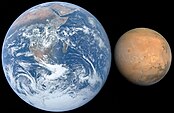




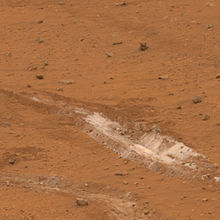

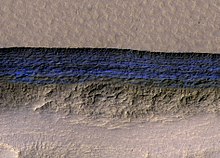


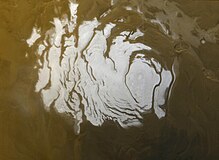



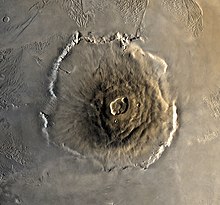



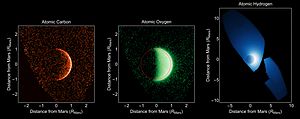
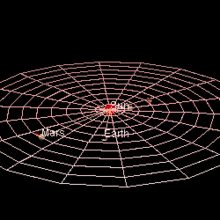
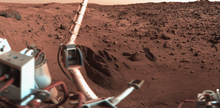

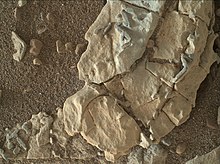
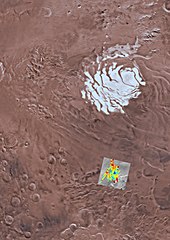


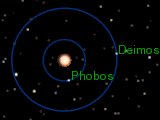













0 Comments